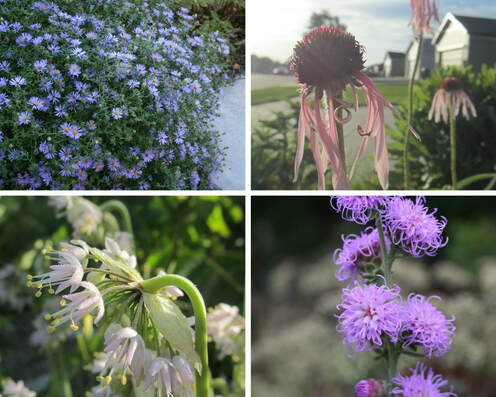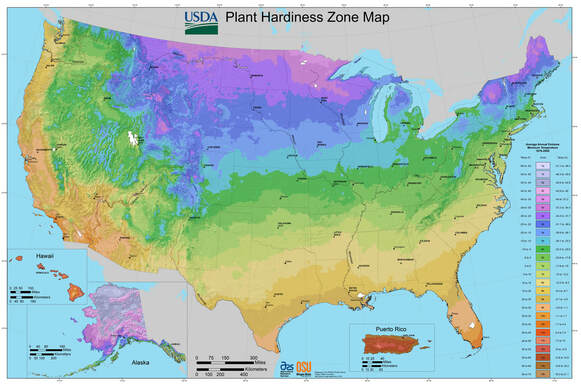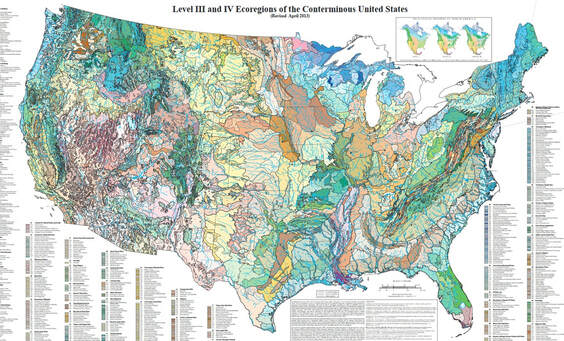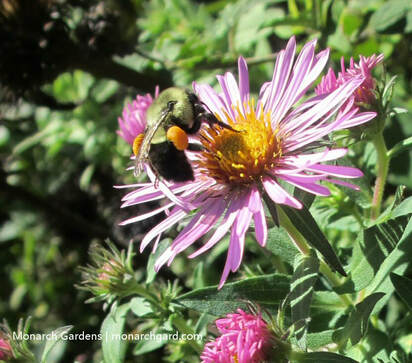- Limit you species list. Trying to cram 15 or 20 varieties into a small space will make it look wild and messy in short order. Aim for around 5 species.
- Those species should be behaved clumpers -- they don't run rampant by roots or toss out tons of seed that germinates easily even asphalt shingles.
- Select a base layer or living green mulch; I suggest sedge since there is always a species for sun or shade or wet or dry or clay or sand. If you've got 100 feet to work with you might try 50 sedge to start.
- That leaves you with 4 plants of the 5 in your small garden, and these will be ornamental flowers most likely. Look for 1-2 that bloom in each season -- spring, summer, fall. With each flower place them in groups of 3-5 or so, assuming they don't get too big (it's ok to have one that gets wider, but only one in the whole bed). Grouping makes the garden seem more together and creates a brighter beacon for pollinators.
- Keep those plants short. A small garden that's super tall is just begging for a mower, but one that's 2-3 feet tall looks more approachable and intentional.
So let's say you have 100 feet in half sun to full sun with clay soil that's dry in summer but moist in spring and fall. What might your plant selection look like?
- 50 plains oval sedge (Carex brevior) -- green mulch (plant on a grid 12 inches apart)
- 15 nodding onion (Allium cernuum) -- bulb that slowly duplicates in drifts, blooms mid summer (three clumps of 5)
- 9-15 prairie alumroot (Heuchera richardsonii) -- superb contrasting foliage, blooms in mid to late spring (groups of 3-5)
- 9 pale purple coneflower (Echinacea pallida) -- small footprint with fuzzy leaves and outstanding winter seed heads, blooms in early summer (groups of 3)
- 3 meadow or rough blazingstar (Liatris ligulistylis or aspera) -- architectural spikes with winter interest, blooms in late summer to early fall (group of three / two and one)
- 1 aromatic aster (Symphyotrichum oblongifolium) -- shrubby aster, blooms in mid to late fall
So there you go, a designed pocket prairie that's better than daylily or lawn or wood mulch and will get you ready for that winning lotto ticket and a new 40 or 400.






 RSS Feed
RSS Feed

